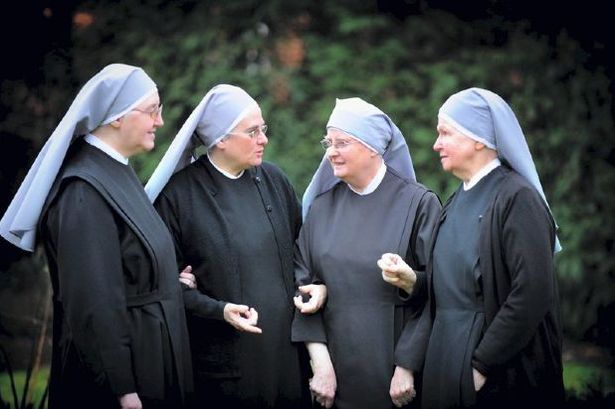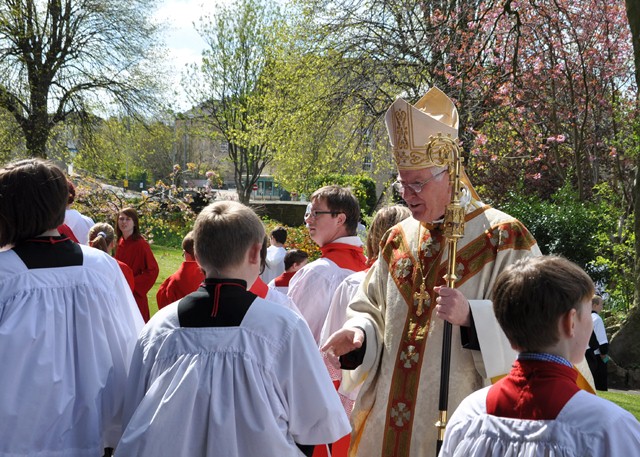Dear Friends in Christ,
Welcome back to this week’s Bishop’s Blog – my weekly online reflection as Bishop of Lancaster!
Last Tuesday, just before the midday Mass in St. Peter’s Cathedral, Lancaster which was being offered for deceased bishops, clergy, religious and lay faithful of the Diocese, I had the happy task of installing a number of new members into the Cathedral Chapter of Canons.
There were six newly appointed Canons installed, one of whom was appointed an honorary Canon. It was an occasion of honouring service in the Church.
The Chapter is a group of priests that meets at least twice each year and also functions as the separate College of Consultors which advises and offers counsel to the bishop on various matters pertaining to the life of the Diocese.
In the event of there being no bishop for whatever reason, the Cathedral Chapter would consult and offer names to the Apostolic Nuncio as to who should be the next bishop.
In the meantime, the College normally gathers, in the time of a vacancy, to elect a Diocesan Administrator until a new bishop is appointed.
This Sunday the Church begins her new liturgical year with the short but deeply appealing liturgical season of Advent. As November draws to a close, so here in our part of the world nature also seems to close down, while the hours of daylight gradually diminish.
These late autumnal days can prompt personal reflection, even introspection, on our part as we wonder at the cycle of nature, the pattern of dying and eventual rebirth around us. Where do we/I fit into the greater scheme of things, and what is the direction, even meaning, of my own life?
The Church in the course of her rich liturgy of Advent offers us guidance and light and a sure reason to hope as she invites us to re-live the dramatic story of God’s plan unfolding in the history of his people Israel, and which reaches its climax in the birth of the Virgin Mary’s son in the stable at Bethlehem.
The liturgical music, the Old Testament Scripture readings, the evocative antiphons have the single purpose of helping us ‘chime in’ to where God was ultimately leading the human race in his loving purpose for the salvation of the world. As a wise and caring mother, the Church desires each of her children to experience in faith through the liturgy the utter wonder of God’s Son entering into the history of humanity as a tiny child.
For many of us the period leading up to Christmas gets cluttered and increasingly frantic, and for understandable reasons. Yet there is a precious grace on offer proper to Advent – the grace of rediscovering our need for a saviour and the value that Christ has placed on each one of us by becoming our brother in the flesh.
The presents and festivity which accompany Christmas have their place, but we known deep down that they are transitory and don’t ultimately satisfy us. If we create time for our Sunday Advent Mass and moments of quiet prayer we will hear news that will cheer us, and find true spiritual food and drink which will not disappoint us.
The yearning of the human heart for what is enduring, even eternal, finds expression in the beautiful Advent ‘O’ antiphons, sung at evening prayer on the nine days immediately preceding Christmas. These antiphons each capture and articulate our deep-seated need for One to come down from heaven and save us. An example of these profoundly meaningful and moving antiphons is the one sung on 23rd December:
O Emmanuel, our king and lawgiver, the expectation of the nations and their Saviour: come and save us, Lord our God.
Let us be sure and meet the Lord, and engage with the story of our salvation during this most appealing of liturgical seasons!
May God bless you all this Advent Season,
+Michael G Campbell OSA
Bishop of Lancaster
Photos of the Chapter Mass may be used if accredited to ‘the Bishop’s Blog’.






































































You must be logged in to post a comment.